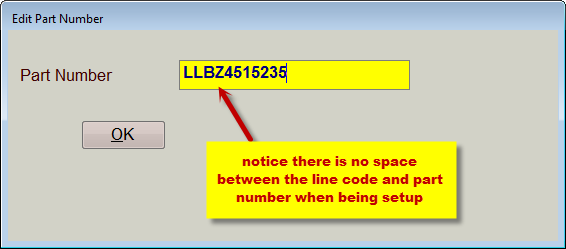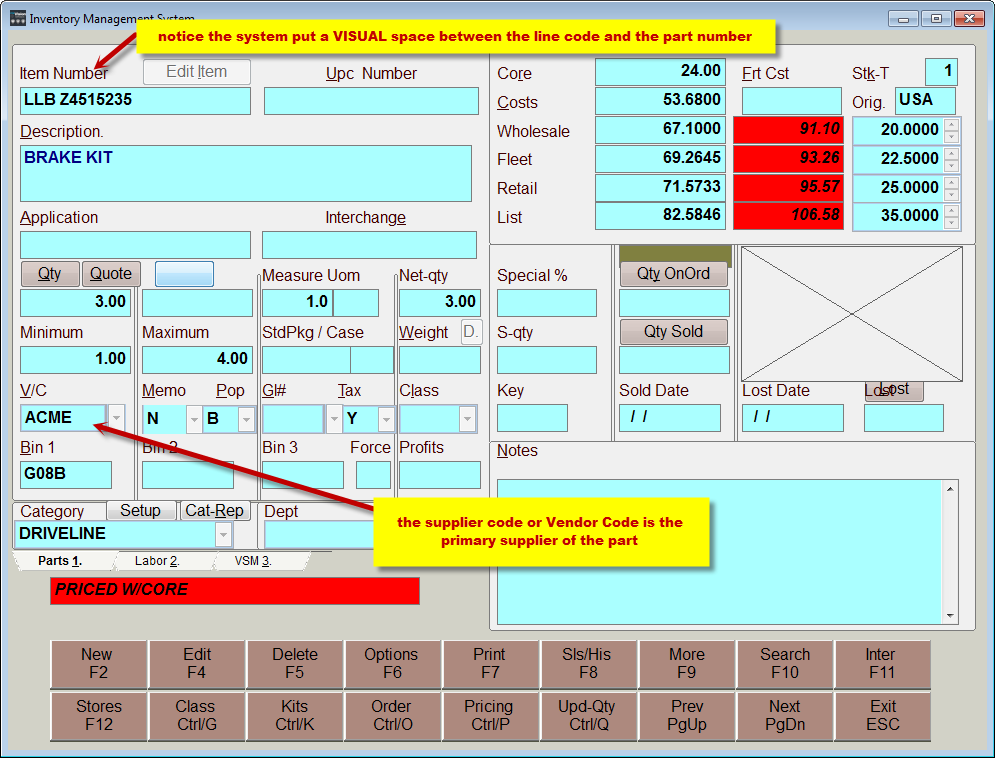 894
894
Line Codes are the primary search, sort and report tool when dealing with Inventory.
- List of the Common Line Codes used
- List of Special Line Codes (which cannot be used for anything other then indicated)
- How to setup Default Line Codes
Each item you sell will need a “line code”; Line Codes are simply a three character code used to represent the line of parts. This code is used on reports and to distinguish between parts with the same part number but in different lines (manufacturer).
EXAMPLE: LONG LASTING BRAKES INC.
LINE CODE: LLB
NOTE: Line codes should not be confused with supplier codes. Though these codes can be the same when purchasing from the OEM but that is rare in most cases. In the example shown below the LLB part is purchased from ACME. The main reason you do not want to use the Supplier as your Line Code is because you may get that part from other Vendors.
Create a part number for the item to be added to inventory. Most manufacturers already have a part number assigned to the part and it is best if this part number is used. This part number is then appended to the line code to make the completed item number.
EXAMPLE: LONG LASTING BRAKE INC.
PART NO: Z4515235
LINE CODE + PART NO = LLBZ4515235
The Item Number field has room for the 3-character line code and a part number of up to 18 characters.
Below is an example of this LLB part being setup in Inventory following the steps in Adding & Editing Inventory


Best Practices Suggestion: Create a plan for your line codes refer to the lists provided and map out your line codes, you can even create the Default line item to get a complete list of your Line Codes to ensure consistency before proceeding to Adding & Editing Inventory.



